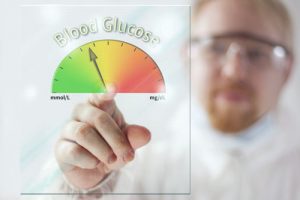Glucose meters are being developed that have “lab-on-a-chip” methodology as a way to diagnose and hopefully prevent diabetes. The application of an optofluidic device enables detection of glucose in solution that requires only a droplet of sweat to test, rather than a drop of blood.
Researchers from Hong Kong’s Polytechnic University have integrated fiber optic glucose sensors into a microfluidic chip as a way to create a portable, high performance, low cost device for the non-invasive measure of glucose levels. The electrochemical glucose biosensors have the capability of being integrated into microfluidic channels as a way to manufacture portable, low cost easy-to-handle microfluidic chips. The researchers have found that fiber optic sensors provide a solution to the issue of electroactive interference problems with the devices in the past.
With the combination of a fiber optic biosensor and the fluidic chip, researchers developed an interference-free optofluidic device that is ultrasensitive and can be used to detect glucose levels. As a way to transform the fiber optic refractive index sensor into a glucose sensor, the researchers chose glucose oxidase as its sensing material as it would react with glucose in a solution. They also added a pH responsive multilayer film to aid in the capture and measurement of the glucose. Fiber optic devices induce a strong co-directional mode coupling that results in a central wavelength that is sensitive to changes in the refractive index that surrounds the media, in this case, the evanescent field of optical fiber.
Universe Kogaku designs and manufactures optical lenses for industrial, medical, high tech and electronic applications. Standard and custom lens assemblies for scanners, CCTV, CCD/CMOS, medical imaging, surveillance systems, machine vision and night vision systems are also available.